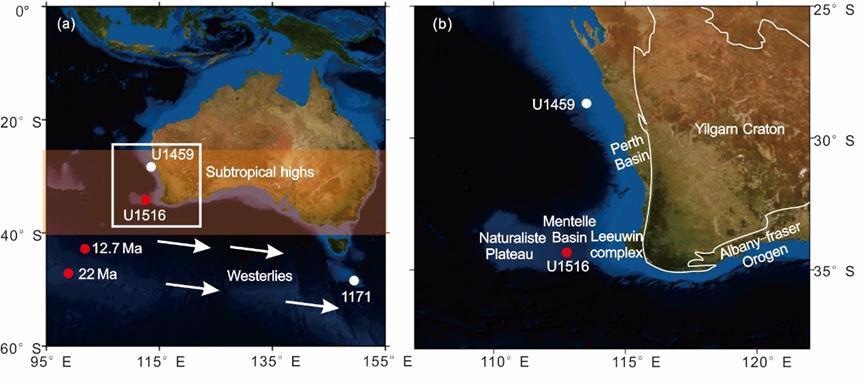Reviewed by Alex SmithMay 10 2022
In light of global warming with increasing atmospheric carbon dioxide (CO2) levels and melting polar ice, reconstruction of paleoenvironmental and paleoclimatic history during past periods when the Earth’s climate system altered significantly is vital for comprehending climate mechanism and thus enhancing predictions of the future.
 Site location and geological background off the southwest coast of Australia. Image Credit: Institute of Oceanology of the Chinese Academy of Sciences.
Site location and geological background off the southwest coast of Australia. Image Credit: Institute of Oceanology of the Chinese Academy of Sciences.
Deep-sea sediments currently offer scientists a unique perspective on paleoclimatic and paleoenvironmental history.
The Miocene epoch, which lasted 23 to 5 million years, was critical for the development of the Antarctic ice sheets (AIS). A research team headed by professor Tiegang Li of the Chinese Academy of Sciences’ Institute of Oceanology (IOCAS) recently used deep-sea sediments offshore of southwest Australia to recreate paleoclimatic evolution in the southern hemisphere’s middle latitudes during this time period.
This history serves as a vital link between the development of the westerlies and the AIS. It also proves that Antarctic signals were transmitted to lower latitudes when the Earth’s unipolar ice sheets were still developing.
The research was published on April 22nd, 2022, in the Science China Earth Sciences journal.
The International Ocean Discovery Program (IODP) drilled deep-sea sediment cores from the southeast Indian Ocean’s Mentelle Basin in 2017. To recreate the paleoclimatic evolution in the southern hemisphere’s middle latitudes, scientists from IOCAS merged the analysis of siliciclastic mass accumulation rate, clay minerals, grain size, and elemental composition of the sediments.
The Mentelle basin and Australia were much closer to Antarctica in the Miocene than they are now owing to the northward drift of the Australian plate ever since Cenozoic.
Around the same time, the westerlies have been existing in the southern hemisphere’s middle latitudes, contributing significantly to southwest Australia’s precipitation. As a result, the Mentelle basin is an excellent location for analyzing the interactions between the hydrosphere, cryosphere, lithosphere and atmosphere.
The volume of terrigenous material transported from southwest Australia to the ocean increased substantially, with the fluvial component contributing significantly more than the aeolian dust component 13 million years ago.
It became wetter and the continental chemical weathering became stronger in southwest Australia after the late middle Miocene.
Tiegang Li, Professor, Institute of Oceanology, Chinese Academy of Sciences
The investigators also discovered that Australia’s significant climate transition happened shortly after the permanent formation of AIS, with dramatic drops in deep-sea temperatures and considerable expansions in zonal and meridian sea surface temperature gradients. Meanwhile, the monsoon system in South Asia accelerated.
These consistent changes might indicate the transmission of Antarctic signals along the ocean and atmosphere to lower latitudes.
Tianqi Sun, Study First Author, Chinese Academy of Sciences
Professor Li states, “In the future, we will then combine Nd isotopes of seawater to study the impact of AIS expansion on ocean circulation in the Indian Ocean.”
The Chinese Academy of Sciences’ Strategic Priority Research Program and the National Natural Science Foundation of China funded this study.
Journal Reference:
Sun, T., et al. (2022) Climate evolution of southwest Australia in the Miocene and its main controlling factors. Science China Earth Sciences. doi.org/10.1007/s11430-021-9904-y.